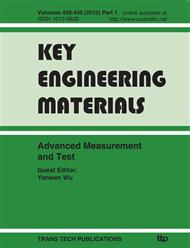p.788
p.794
p.799
p.805
p.811
p.818
p.823
p.828
p.832
Studies on the Bidirectional Exciting Control for the Seismic Analysis of the Soil Mechanics
Abstract:
According to the seismic analysis of the soil mechanics for the major and complex geotechnical engineering projects such as highway, high-speed railway, subway, dams and so on, there is acute lack testing instrument considering the level earthquake load and the vertical earthquake load. In order to resolve this problem a new design plan is putted forward in this paper, which can generate bidirectional exciting force with designed amplitude ratio, phase and waveform. The radial exciting subsystem (water pressure) and the axial exciting subsystem (force) are both built by the hydraulic servo systems. The two subsystems have excellent dynamic response characteristics. Several key technical issues existing in bidirectional exciting control have been discussed in detail such as: (1) high-precision unconventional bidirectional exciting control strategy; (2) decoupling control methods in the bidirectional exciting process; (3) real-time compensation by using digital image technology. The instrument will provide advanced test conditions for the complex geotechnical engineering.
Info:
Periodical:
Pages:
811-817
Citation:
Online since:
June 2010
Authors:
Price:
Сopyright:
© 2010 Trans Tech Publications Ltd. All Rights Reserved
Share:
Citation:


